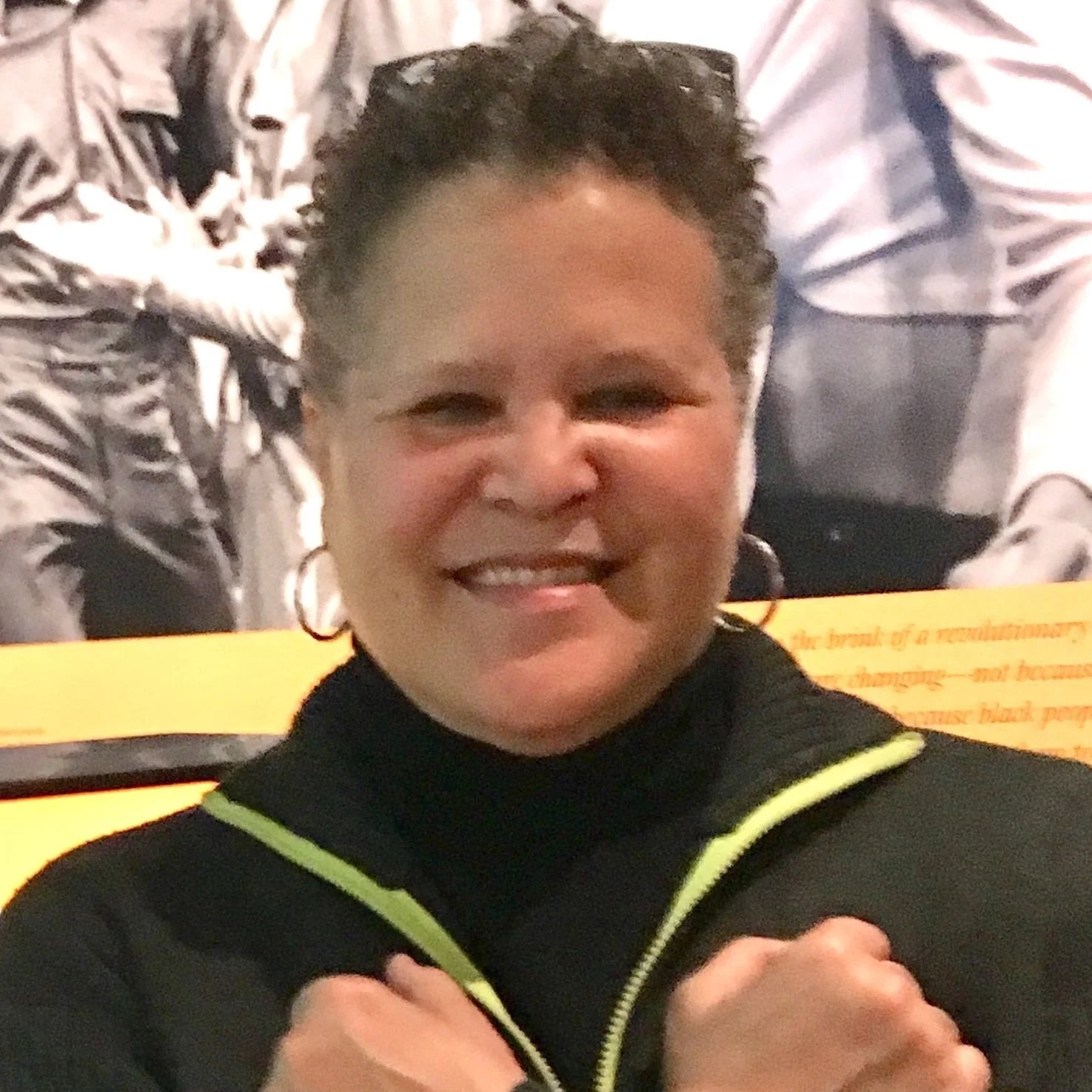Archiving the Life of Angela Davis
Lisbet Tellefsen (left) and Angela Davis (right) at the Angela Davis: Seize the Time exhibition at the Oakland Museum of California; photograph by Autumn King, courtesy Lisbet Tellefsen.
Assembling a 10,000-Piece Jigsaw:
Archiving the Life of Angela Davis
Few people have left as remarkable an impact on modern American culture as the Black lesbian activist, scholar, political prisoner and public intellectual Angela Davis. A new exhibition at the Oakland Museum of California, Angela Davis: Seize the Time, opening a half-century after her 1972 trial and acquittal, provides a unique narrative of Davis’s journey through the junctures of race, gender, and economic and political policy. Delayed by the COVID-19 pandemic, the exhibition was first mounted at Rutgers University’s Zimmerli Art Museum from September 2021 to June 2022 and will be on view in Oakland through June 2023.
The exhibition draws heavily on the archival collection of archivist, collector, and longtime GLBT Historical Society volunteer and supporter Lisbet Tellefsen, who is probably the world’s foremost archivist working with materials connected to Angela Davis. Tellefsen previously co-curated a special exhibition at the GLBT Historical Society Museum in 2018, Angela Davis: OUTspoken, now available as an online exhibition. To celebrate the exhibition, we sat down for a conversation with Tellefsen about her Angela Davis archives.
You have been collecting posters and archival materials about Angela Davis for decades. What is it like to be a part of this exhibition, to see much of your collection on display?
LT: While I proposed this exhibition and supplied most of the material, I was not the curator for either incarnation, and ultimately it’s the curator’s prerogative to choose the approach. But as an archivist, what excites me most about this exhibit is that rarely, if ever, would you see this much Angela Davis material assembled and displayed in this way. Archives—old documents—typically live in boxes in the basement of a university library. Normally if you’re interested in Davis, you’d find out where her papers are, read the finding aid and look through the posters in dozens of folders. You don’t usually see them all in one place, hung on the wall. So literally to have dozens of posters from around the world displayed with trial sketches, photographs, and documents, makes it a once in a lifetime opportunity to get immersed in this history. As an archivist, that’s interesting to me.
When the show was at Zimmerli, I used to wander through the galleries and if I saw a younger person, I’d occasionally sidle up to them and ask what they thought. One time, when I asked that of a twentysomething young African American woman, she said, “I’m really struck that this was before the internet; how did a young Black woman from America generate this much material around the world!” And I’d never really thought about that! Davis is not the President, she’s not a Kardashian, but a young Black girl from Birmingham, Alabama. To capture the public imagination globally in the late 1960s and 1970s—and generate this much ink—was pretty extraordinary.
So this exhibition is a culmination of your archiving work on Angela Davis?
LT: Yes. As a backstory, I had worked with my godfather’s papers, and for decades I pondered the question of how to use archival materials to reconstruct a long, rich life. And as I gathered Angela Davis materials, I stumbled across a methodology. If I digitized and assembled materials chronologically, I start to put the pieces of Angela’s life together like a 10,000-piece jigsaw puzzle. And fate handed me some remarkable gifts. Print media started to liquidate their photo morgues and archives, and their staff photographers had documented every single day of Davis’ trial. I snapped up over 1,000 newswire photographs related to her trial, the Black Panther party, the Black Power movement, and trust me, when you put 1,000 photographs of Davis together in chronological order, very few of us have our lives documented that extensively and in that kind of detail. It was a remarkable exercise in the potentials of archival material.
You’ve been a collector—an archivist—all your life. What have you learned, looking back from the vantage point of 2023?
LT: I’m currently teaching as a Fellow at the Department of African American Studies at the University of California at Berkeley, and I thought about this while preparing a talk there. A distinction I felt was important to make was that in the realm of archives, there are many different roles. Collectors and community archivists have a very important role in the preservation of history. Community archivists, as distinct from institutional archivists, may not be formally trained, but they have a passion for a particular history, they’re more on point for their passions. The zone I inhabit is really as a liaison between the street—the folks creating this history—and people or institutions. In addition to Angela Davis, I’ve worked with my partner on a Black Panthers archive, and because of my history as a Black queer publisher and organizer back in the day, I also maintain a Black queer archive.
NOTE: Angela Davis: Seize the Time will be at the Oakland Museum of California through June 2023. Angela Davis: OUTspoken is available on our website here.
Lisbet Tellefesen has been an archivist, collector and event producer in the Bay Area for more than three decades.


